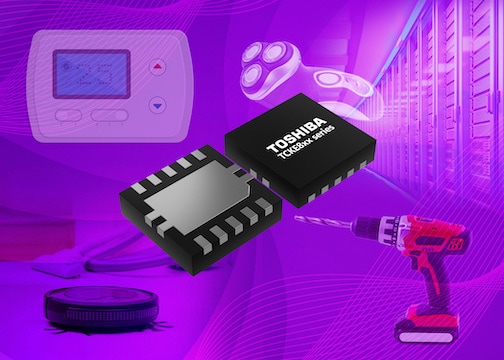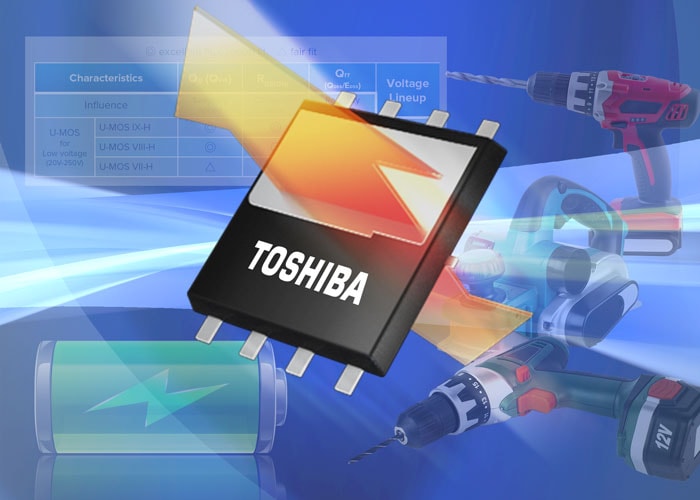- General Top
- SEMICONDUCTOR
- STORAGE
- COMPANY
-
My ToshibaSemicon
- Semiconductor Top
-
ApplicationsAutomotive
Body Electronics
xEV
In-Vehicle Infotainment
Advanced Driver-Assistance Systems (ADAS)
Chassis
IndustrialInfrastructure
BEMS/HEMS
Factory Automation
Commercial Equipment
Consumer/PersonalIoT Equipment
Healthcare
Wearable Device
Mobile
Computer Peripherals
-
ProductsAutomotive Devices
Discrete Semiconductor
Diodes
Transistors
Logic ICs
Analog Devices
Digital Devices
Wireless Devices
※
: Products list (parametric search)
Power SemiconductorsSiC Power Devices
※
: Products list (parametric search)
Isolators/Solid State RelaysPhotocouplers
Digital Isolators
Solid State Relays
Fiber Optic Transmitting Modules
※
: Products list (parametric search)
MOSFETsIGBTs/IEGTsBipolar Transistors※
: Products list (parametric search)
Diodes※
: Products list (parametric search)
MicrocontrollersMotor Driver ICsIntelligent Power ICs※
: Products list (parametric search)
Power Management ICsLinear ICs※
: Products list (parametric search)
General Purpose Logic ICsLinear Image SensorsOther Product ICsOther Product ICs
※
: Products list (parametric search)
-
Design & Development
Design & Development
Innovation Centre
At the Toshiba Innovation Centre we constantly strive to inspire you with our technologies and solutions. Discover how to place us at the heart of your innovations.
-
Knowledge
Knowledge
Highlighted Topics
Further Materials
Other
- Where To Buy
- Part Number & Keyword Search
- Cross Reference Search
- Parametric Search
- Stock Check & Purchase
This webpage doesn't work with Internet Explorer. Please use the latest version of Google Chrome, Microsoft Edge, Mozilla Firefox or Safari.
require 3 characters or more. Search for multiple part numbers fromhere.
The information presented in this cross reference is based on TOSHIBA's selection criteria and should be treated as a suggestion only. Please carefully review the latest versions of all relevant information on the TOSHIBA products, including without limitation data sheets and validate all operating parameters of the TOSHIBA products to ensure that the suggested TOSHIBA products are truly compatible with your design and application.Please note that this cross reference is based on TOSHIBA's estimate of compatibility with other manufacturers' products, based on other manufacturers' published data, at the time the data was collected.TOSHIBA is not responsible for any incorrect or incomplete information. Information is subject to change at any time without notice.
require 3 characters or more.
Developing Servo Drives for Next-Generation Robotics

Last year the robotics technology market, which deals with all the hardware and software components needed for building robots, was estimated to have a total worth of over $60 billion. Furthermore, it is expected that this market will keep on expanding considerably in the years ahead - hitting $170 billion annually in 2027 and experiencing a compound annual growth rate (CAGR) of approximately 13.5%. Though other market forecasts are likely to be heavily impacted by the COVID-19 pandemic, there is good reason to believe that demand within the robotics sector will actually be boosted by the situation. There will be a greater need for automation in factory production lines, along with more widespread use of autonomous guided vehicles (AGVs), so that the lives of human operatives don’t need to be put at risk.
Servos are an essential constituent of robots and AGVs, as they enable movement and orientation. These require the support of efficient motor control systems. Such systems will consist of the following elements.
- The controller - This ensures that commands are correctly sent to the motor. A sophisticated motor control algorithm will be used alongside it, to heighten operational efficiency levels.
- The power delivery - Maximum power to the motor’s coils must be provided, with only a small amount of power being converted into heat energy. If not, the battery reserves of the robot/AGV will be spent too quickly (thereby curtailing the unit’s effectiveness). Also, more money will have to be invested in the system’s thermal management mechanism.
- The feedback loop - This relies on constantly updated data about the exact position of the motor’s rotor. Encoders (either capacitive or optical) or alternatively Hall sensors can be employed to capture the necessary data.
Intended for accelerating robotic development projects, the Toshiba Servo Drive Reference Model draws on the company’s innovative technology in both motor control and power discretes. It presents engineers with a highly efficient and configurable platform for creating fully optimised drive and control solutions for brushless DC (BLDC) motors. This reference model features a Toshiba microcontroller unit (MCU) with an Arm® Cortex®-M4 processing core capable of operating at 160MHz, plus a floating point unit (FPU) and 512kB of built-in Flash memory. Accompanying this are six 100V-rated low on-resistance Toshiba MOSFETs that minimise power losses. Through the reference model up to three BLDC motors can be served using the single MCU. This means that markedly smaller bill-of-materials (BoM) costs can be benefited from. The Vector Engine embedded into the MCU is responsible for executing complex vector control calculations. Thanks to the modular concept utilised by this reference model, different power delivery and encoder options can be added as required.
A whitepaper on how to implement fully effective robotic servo drives, and in which details on this reference model have been outlined, is now available. It can be downloaded below:




